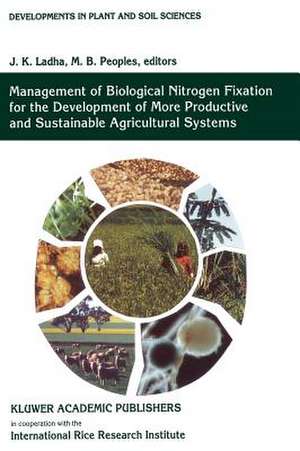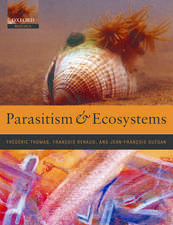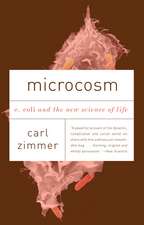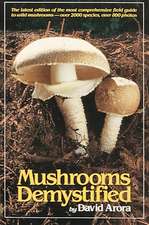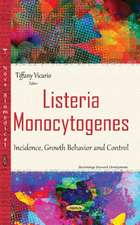Management of Biological Nitrogen Fixation for the Development of More Productive and Sustainable Agricultural Systems: Extended versions of papers presented at the Symposium on Biological Nitrogen Fixation for Sustainable Agriculture at the 15th Congress of Soil Science, Acapulco, Mexico, 1994: Developments in Plant and Soil Sciences, cartea 65
Editat de J.K. Ladha, M.B. Peoplesen Limba Engleză Hardback – 30 sep 1995
| Toate formatele și edițiile | Preț | Express |
|---|---|---|
| Paperback (1) | 795.07 lei 38-44 zile | |
| SPRINGER NETHERLANDS – 12 oct 2012 | 795.07 lei 38-44 zile | |
| Hardback (1) | 948.52 lei 6-8 săpt. | |
| SPRINGER NETHERLANDS – 30 sep 1995 | 948.52 lei 6-8 săpt. |
Din seria Developments in Plant and Soil Sciences
- 18%
 Preț: 1216.88 lei
Preț: 1216.88 lei -
 Preț: 388.91 lei
Preț: 388.91 lei - 18%
 Preț: 1216.88 lei
Preț: 1216.88 lei - 18%
 Preț: 1219.23 lei
Preț: 1219.23 lei - 18%
 Preț: 1237.75 lei
Preț: 1237.75 lei - 24%
 Preț: 1073.18 lei
Preț: 1073.18 lei - 18%
 Preț: 963.54 lei
Preț: 963.54 lei - 24%
 Preț: 1073.76 lei
Preț: 1073.76 lei -
 Preț: 393.33 lei
Preț: 393.33 lei -
 Preț: 383.99 lei
Preț: 383.99 lei - 15%
 Preț: 694.76 lei
Preț: 694.76 lei -
 Preț: 382.04 lei
Preț: 382.04 lei - 18%
 Preț: 1212.68 lei
Preț: 1212.68 lei - 18%
 Preț: 1223.95 lei
Preț: 1223.95 lei -
 Preț: 396.20 lei
Preț: 396.20 lei - 18%
 Preț: 1218.60 lei
Preț: 1218.60 lei -
 Preț: 381.12 lei
Preț: 381.12 lei - 18%
 Preț: 1813.36 lei
Preț: 1813.36 lei - 18%
 Preț: 1222.99 lei
Preț: 1222.99 lei - 15%
 Preț: 642.18 lei
Preț: 642.18 lei - 18%
 Preț: 1222.38 lei
Preț: 1222.38 lei - 15%
 Preț: 645.77 lei
Preț: 645.77 lei - 15%
 Preț: 633.56 lei
Preț: 633.56 lei - 18%
 Preț: 948.03 lei
Preț: 948.03 lei -
 Preț: 385.61 lei
Preț: 385.61 lei -
 Preț: 379.55 lei
Preț: 379.55 lei -
 Preț: 404.99 lei
Preț: 404.99 lei -
 Preț: 390.46 lei
Preț: 390.46 lei - 18%
 Preț: 1215.51 lei
Preț: 1215.51 lei - 18%
 Preț: 1212.98 lei
Preț: 1212.98 lei - 18%
 Preț: 1219.08 lei
Preț: 1219.08 lei -
 Preț: 380.14 lei
Preț: 380.14 lei - 18%
 Preț: 1218.78 lei
Preț: 1218.78 lei
Preț: 948.52 lei
Preț vechi: 1156.73 lei
-18% Nou
Puncte Express: 1423
Preț estimativ în valută:
181.66€ • 187.16$ • 152.17£
181.66€ • 187.16$ • 152.17£
Carte tipărită la comandă
Livrare economică 24 februarie-10 martie
Preluare comenzi: 021 569.72.76
Specificații
ISBN-13: 9780792334132
ISBN-10: 0792334132
Pagini: 291
Ilustrații: VI, 291 p.
Dimensiuni: 210 x 279 x 18 mm
Greutate: 0.74 kg
Ediția:Reprinted from PLANT AND SOIL; 174:1-2, 1995
Editura: SPRINGER NETHERLANDS
Colecția Springer
Seria Developments in Plant and Soil Sciences
Locul publicării:Dordrecht, Netherlands
ISBN-10: 0792334132
Pagini: 291
Ilustrații: VI, 291 p.
Dimensiuni: 210 x 279 x 18 mm
Greutate: 0.74 kg
Ediția:Reprinted from PLANT AND SOIL; 174:1-2, 1995
Editura: SPRINGER NETHERLANDS
Colecția Springer
Seria Developments in Plant and Soil Sciences
Locul publicării:Dordrecht, Netherlands
Public țintă
ResearchCuprins
1. Biological nitrogen fixation: An efficient source of nitrogen for sustainable agricultural production?.- 2. Sustainable agriculture in the semi-arid tropics through biological nitrogen fixation in grain legumes.- 3. Enhancing crop legume N2 fixation through selection and breeding.- 4. Enhancing legume N2 fixation through plant and soil management.- 5. Role of legumes in providing N for sustainable tropical pasture systems.- 6. Management of biological N2 fixation in alley cropping systems: Estimation and contribution to N balance.- 7. Manipulation of rhizobia microflora for improving legume productivity and soil fertility: A critical assessment.- 8. Green manure technology: Potential, usage, and limitations. A case study for lowland rice.- 9. Biological nitrogen fixation associated with sugar cane and rice: Contributions and prospects for improvement.- 10. Biological N2 fixation by heterotrophic and phototrophic bacteria in association with straw.- 11. Potential and pitfalls of trying to extend symbiotic interactions of nitrogen-fixing organisms to presently non-nodulated plants, such as rice.- 12. New techniques for studying competition by Rhizobia and for assessing nitrogen fixation in the field.- 13. Future benefits from biological nitrogen fixation: An ecological approach to agriculture.- 14. Research evaluation and impact analysis of biological nitrogen fixation.- Author index.
Recenzii
`The book is highly recommended for advanced students of agriculture as well as for agroculturalists, agrochemists, plant breeders and also also who are interested in various aspects of conservation and improving the natural resources with special reference to problems that are close to sustainable agriculture.'
Acta Physiologiae Plantarum, 18:3 (1996)
Acta Physiologiae Plantarum, 18:3 (1996)
